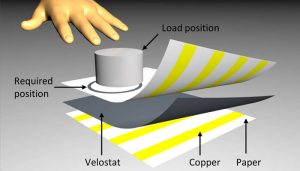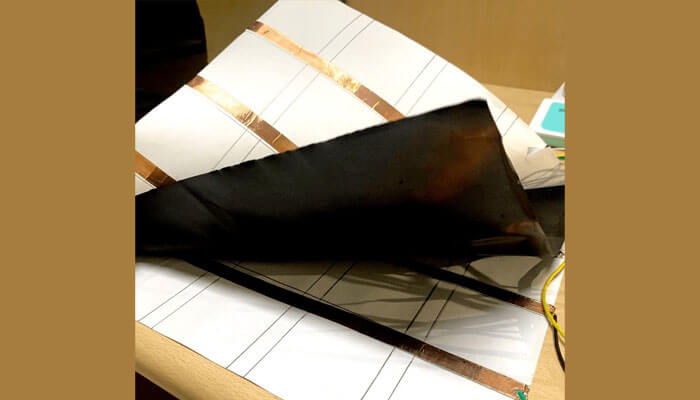Researchers from the Processes, Architecture and Technologies Research in IoT (PATRIoT) lab unveil a low-cost flexible pressure sensor with an AI-embedded algorithm that helps in quantifying performance and progress of patients undergoing physiotherapy.
To restore physical strength in victims of stroke or patients of arthritis who experience muscle weakness, a variety of exercises are typically prescribed as part of physiotherapy. One of them involves the repetitive movement of hands in picking up an object from point A and placing it at point B. When researchers at the PATRIoT lab first toyed with the idea of creating a new-age pressure sensor that could analyze and recognise such activity unobtrusively, it came as no surprise that features such as physical flexibility, low-cost and low weight topped the list of must-haves. Flexible electronics or developing thin, bendable and stretchable circuits for ‘smart’ applications is one of the fortes of this group. “In this case, apart from the typical smart properties of sensors, we also wanted to cover a large area and try to map the pressure distribution in the entire area,” says Dr. Aftab Hussain, principal investigator of the lab.

What They Did
Their experimental canvas for the required physical rehabilitation exercises was a sensory mat containing designated areas for placing weights. With conductive foam as the main ingredient, this low-cost paper-based 4X4 pressure sensor matrix was fabricated with a layer of paper each on top and the bottom, sandwiching copper electrodes. Each time the foam is pressed (by a patient), with anastrotsoli the pressure application there is a reduction in resistance that can be detected through an external circuit. “We are looking sibutramine kopen if the value of resistance has changed. And if it has, then we try to interpret how much pressure has been applied and where,” explains Dr. Hussain.

Enter AI
Rather than using mathematical analysis to detect the change in resistance values, the researchers trained a machine learning model to detect position of loads for various resistances. According to Anis Fatema, primary author of the study “A Low-Cost Pressure Sensor Matrix For Activity Monitoring In Stroke Patients Using Artificial Intelligence” that was published in the IEEE Sensors Journal, “Neural networks not only help in determining if the load was placed in the correct position but it can also learn from the responses of a person over a period of time.” A comparative analysis between the two methods revealed the superiority of neural networks in load position prediction in a real-world setting.


Advantages
The biggest plus of using this system is the ability to quantify a physiotherapy session. “In addition to tracking progress of patients in terms of accuracy of where they’re placing the load, one can also monitor time taken to place the load. So with this pressure sensor matrix, we can get both speed and accuracy of load positioning,” says Dr. Hussain.
In-house Fabrication
While the product which uses a very thin-film fabrication technique currently costs less than Rs.1,000 a piece, the team is in the process of pushing the envelope even further. “We are trying to see if we can manufacture conductive foam that made the sensor pixels possible via synthetic organic chemistry. That will further reduce the costs but more importantly we’ll be able to tweak the properties of foam to better suit our applications and make them more reliable. In the longer term, technology transfer can happen or a startup may evince interest,” muses Dr. Hussain.



Next post